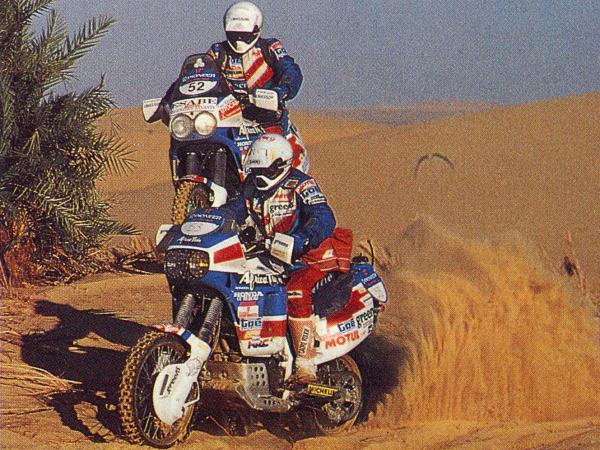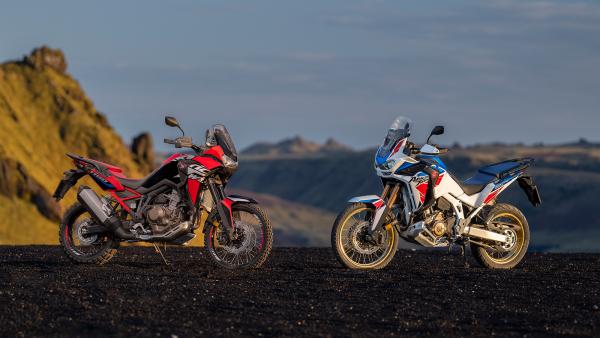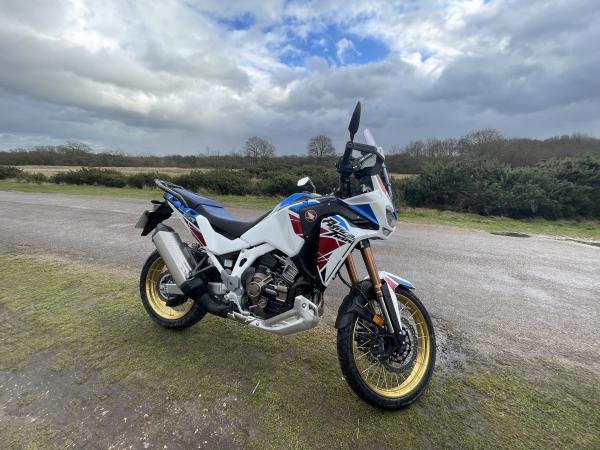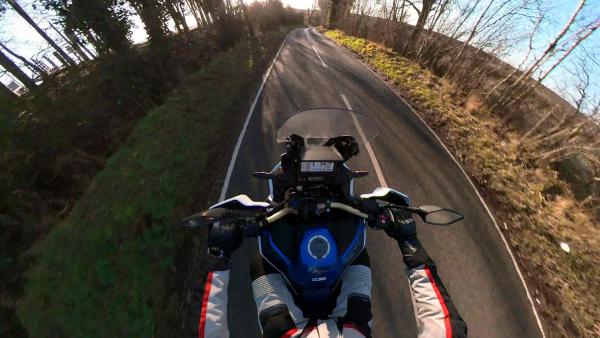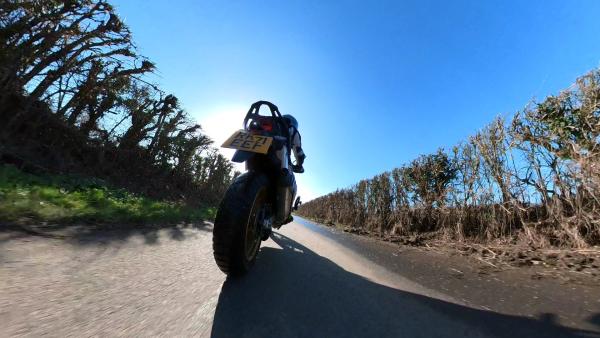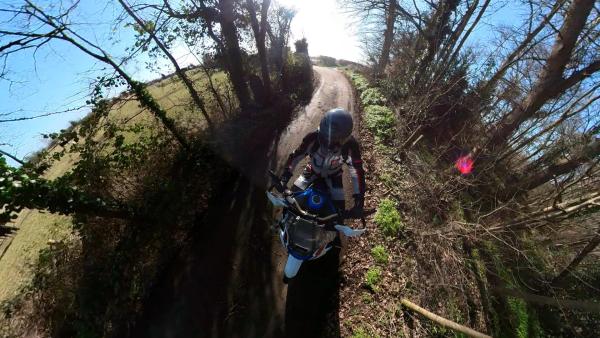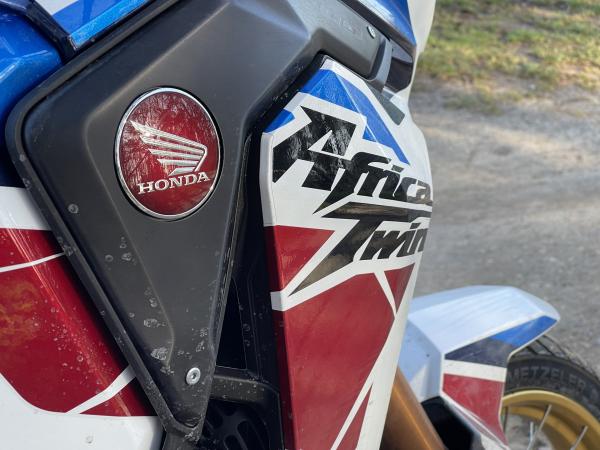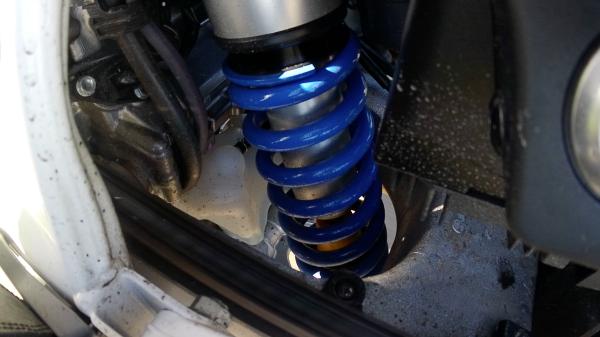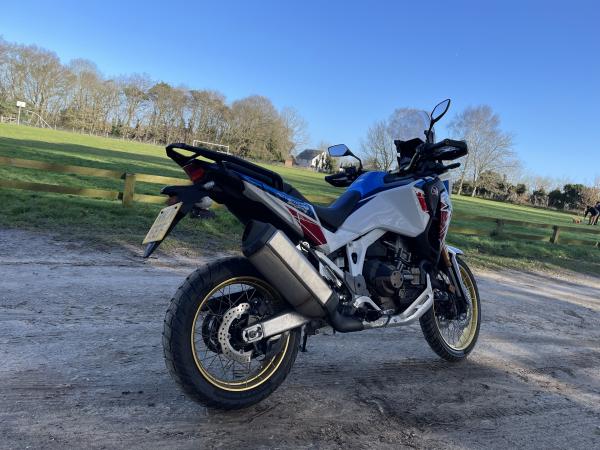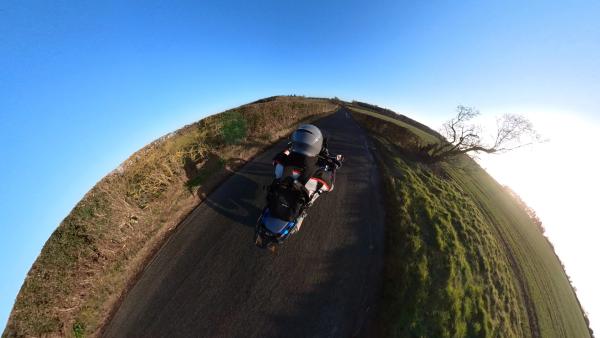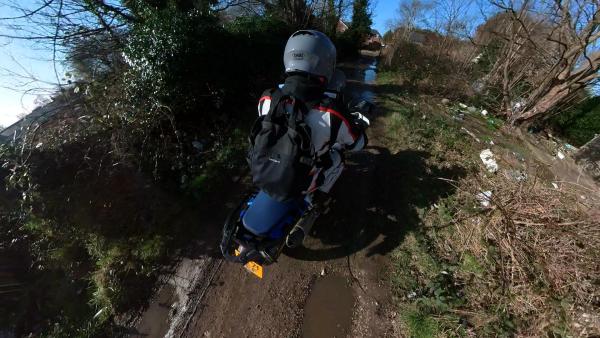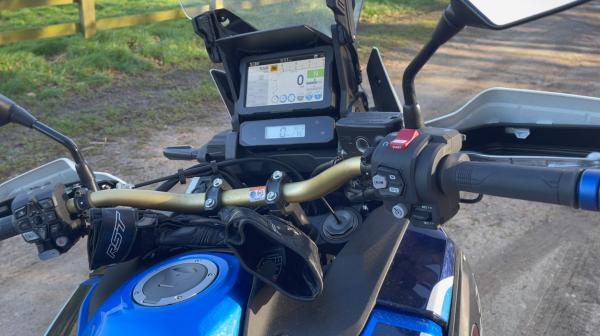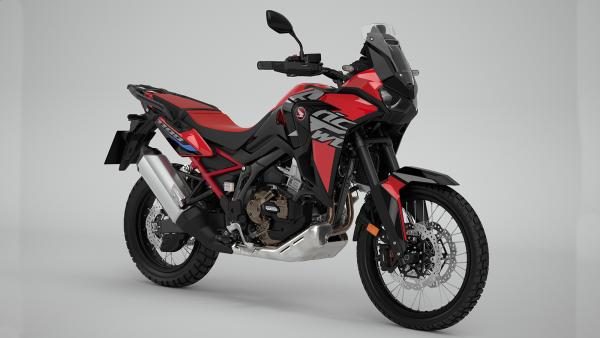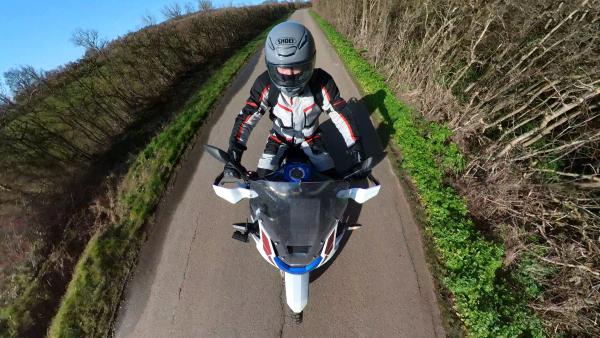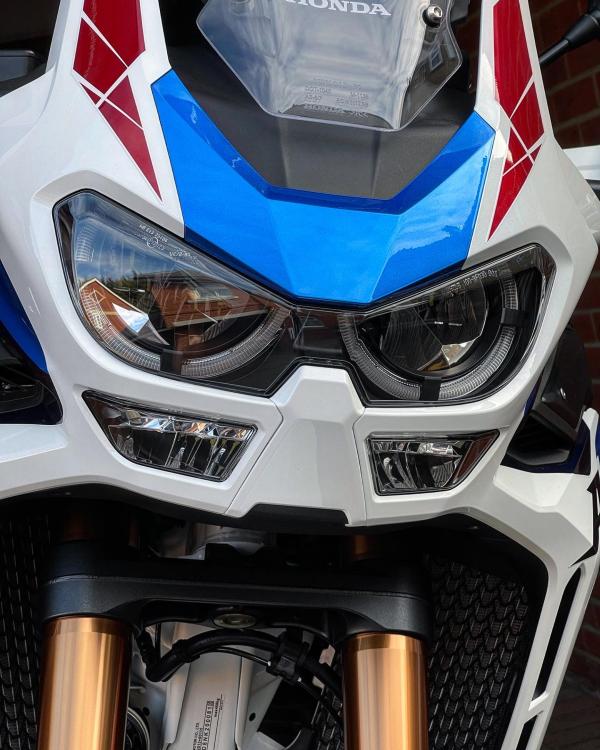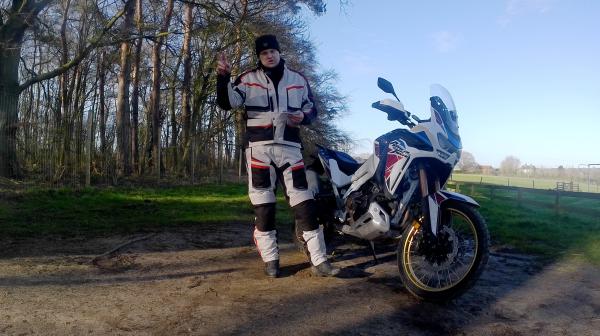Honda Africa Twin Adventure Sports (2022) Adventure Motorcycle Review
With its Dakar heritage and modern day acumen, it’s certainly an iconic motorcycle - but just how good is the Honda Africa Twin Adventure Sports?

Member for
54 years 8 monthsCast your mind back to the Honda NT1100 launch from the tail end of 2021, and if you watched the review video you may remember me mentioning that I’d never actually tasted the Honda Africa Twin, which the latest NT1100 tourer was based…
Well, the guys and girls of Honda simply couldn’t allow that to be the case any longer, and I was soon eyeing up a beautiful Dakar-inspired model outside my house!
A sparkling 2022 Africa Twin Adventure Sports had been delivered, and it promised to live up to all of my dual-sport touring needs for the next few weeks. I was certainly excited, but before we begin…
Africa Twin Model History
A brief model history so we’re all on the same page!
Born in the desert, the original ‘Africa Twin’ was purpose-built for a dream debut - the two NXR750’s taking home 1st & 2nd place in the 1986 Paris-Dakar rally. This kicked off a 4-year run of domination in the legendary rally series.
After those four years of dominance in the late 80s as the NXR750V (1986-1989), the Africa Twin platform then gave way to 9 years of Cagiva and Yamaha wins - but the HRC team certainly learnt plenty in their time competing, building one of the most iconic Honda models to date. You’ll even find the swingarm design on the current Africa Twin from the current CRF450 (with recent wins in 2019 & 2020).
Whilst the Africa Twin project initially began in 1984, the first consumer-focused XRV650 V-twin was made available in 1988, itself a direct descendant of the then-current NXR750 - and said to be built in small numbers by the exact same engineers who constructed the factory machine.
With the consumer-ready XRV650 V-twin available for purchase between 1988-1989, the adventure touring platform became the XRV750 V-twin in 1990-2000 (with variations of the bike available every few years in that time). It was later reborn as the parallel-twin CRF1000L in 2015-2019.
For 2020 the Africa Twin once again evolved to become the CRF1100L, and to this day is loved by many adventure riders across the world…
Want more Africa Twin history? Check here.
Honda Africa Twin 2022 Price & Availability
I was riding the Adventure Sports model (minus the crash bars and panniers) in Pearl Glare White plus the optional DCT, priced up at £15,849. The ‘base model’ 2022 Africa Twin is £13,049 (£13,949 with DCT).
You can also opt for a finance deal on a 2021 model year, which at the time of writing has an offer priced at £129 per month with a £2,701 deposit, over 3 years with a 4000 annual mileage (£500 test ride contribution, 3 years roadside assistance and 3 years extended guarantee). Final payment on that deal is £8,571.82.
Features
This is a seriously specced up machine, capable of fulfilling all of your world-conquering touring desires.
I’ll get to the engine and internals shortly, but as a long-distance tourer this is simply one of the best out there specs-wise.
To list a few specs, a smart 6.5” TFT touchscreen is fitted with Android Auto or Apple CarPlay connectivity, there are two external power sockets (both USB and 12v socket), cruise control, electronically adjustable Showa suspension, larger 24.8 L tank and a six-axis IMU with a number of engine & power maps - you have the freedom to just about take this thing anywhere. Even just to the office.
2022 updates also include refinements made to the Dual Clutch Transmission for smoother initial gearing, standard fitment of the rear carrier, shorter adjustable screen, and (of course) updated graphics.
Engine
Simply put, the 1084cc parallel-twin is a peach. Really easy to get on with, with a throaty growl and plenty of power control options (maybe verging on too many) to fine-tune the output to your riding conditions.
With a 270º crank, the long-stroking twin with SOHC unicam valve train (from the CRF450R) gives you 100.5 BHP (at 7500 rpm) and 105 Nm peak torque (at 6250 rpm) to play with.
Whilst the power figures may not appease some, it feels like all 100 horses race to the rear wheel nigh-on instantly when called upon, the DCT box intelligently clicking down a gear or two to give you torque and power on demand - great fun when coming out of a 30 limit.
Four default riding modes (Tour, Urban, Gravel, Off-road) allow you to quickly switch between pre-set maps, and diving into the dash allows you to adjust the intervention of HSTC from off to 7, 3 levels of engine braking, and 3 levels of wheelie control.
I tended to ride around in Tour mode for the most part, with the highest level of power, mid-range engine braking and active cornering ABS - plus playing around with the button set to adjust the HSTC.
For those looking to scratch the itch of off-road riding, Gravel & Off-road employ low and lower-mid power respectively, the lowest engine braking level, and rear ABS that can be switched off (in off-road only). Just consider a tyre change to something more off-road capable. The Metzeler Karoo Street hoops are good, but not great for green lanes.
Lovely burble to the engine note as well, particularly in the sportier modes where the butterfly valve in the exhaust will open up and you can hear her sing.
It’s clear to see how popular this machine is for all-riding, as it’s capable of doing anything you throw at it. My favourite pastime on it? Byway hunting on B-roads.
DCT
A quick mention to the Dual Clutch Transmission, which makes riding the AT effortless. Some may think it’s an ‘automatic motorcycle’ but it’s far impressive more than that.
Gear changes are as smooth up-and-down as a quickshifter dreams of being, and it is tremendously handy when taken off-road, as you can stand on the pegs and not worry about gear changes - and if you do, you have hand controls!
Where the clutch should be, you’ll find a handbrake positioned just out of reach (so you can’t grab a fistful of handbrake accidentally).
The gear changes, of course, can be set depending on the riding you intend on doing. D mode (I think of it as Drive mode) will seek economy, flicking up to fifth gear when rolling through sleepy 30mph villages which can be a tad annoying - you have to manually flick down or change the mode to avoid waiting for the DCT to catch up to your intentions. S mode, (or ‘Sport’) has three modes (1,2,3) and is more inclined to hang on to gears for longer under acceleration, letting you make the most of the twin.
I tended to press the D button when going into 30 zones, then back into S-mode once the road opens up again. The first couple of gears, perhaps thanks to the 2022 revisions, were smooth and not catchy at all.
Like with most bikes, your riding habits will need a slight bit of tweaking to make use of the features on hand.
If you’re wondering whether to go for the DCT option or not, I’d highly recommend giving it a go first. It’s impossible to stall, effortless to use once you ‘get it’ - but it does mean you can’t bump start it if you’re caught out with a flat battery on tour!
Suspension & brakes
Fitted with electronically adjustable Showa EERA suspension - the 45mm USD front forks have 230mm stroke, rear shock with 220mm travel - you are able to adjust the preload of the rear shock through four settings (one/two riders with/without luggage) plus a user-mode with 24 points of adjustment.
The semi-double-cradle frame with bolt-on aluminium subframe, and the CRF450R swing arm, really give a solid road feel, well set for long hours in the saddle and letting your hair down at the weekend.
Overall ground clearance is 250mm, seat height is 850/870mm, and factor in the 250kg weight of the Adventure Sports with DCT and Suspension, it’s a tall heavy bike - yet it all feels balanced and poised, even when really asking questions on twisty roads in full-sports mode.
I often opted for a little bit more preload, as without the suspension could feel a little soft for my liking.
Braking power is provided by twin 310mm ‘wave’ discs up front and a single rear 256mm disc with cornering ABS, mounted to 18” spoked wheels wearing hoops sized as a front 21” and rear 18”. Rear ABS can be switched off in the right mode, and for such a large machine it feels like you can stop in no time at all.
Day-to-day riding, touring, commuting
Larger riders (particularly myself at 6’4” ish and about 14 stone) will sit here happily all day, with a claimed upper range of 310 miles from the 24.8 L tank - which I found fairly accurate if slogging up and down motorways, easily able to achieve 55-60 mpg. It’s just as comfortable when standing on the pegs, and heated grips that revert to their previous setting (so will warm up as soon as you switch on) is a nice touch, just remember it does this so the battery doesn’t go flat.
Toad, our resident short rider at 5’7”, has in the past happily ridden the Africa Twin, and jumped in the saddle to confirm this whilst I had it in. Shorter riders need not worry about the height and size here, you can still get your tippy toes to the ground.
I particularly enjoyed pairing up my phone & intercom to the bike, able to control navigation and music on the go via the clear, brightly lit, 6.5” TFT dash - plus, it gave the Dakar-styled second screen plenty of use (as it’ll always show your speed and gear info, but oddly not your fuel level or range). You can instantly flick the main screen between your phone and the Honda dash to see your range and fuel gauge, mind.
A slight annoyance was with getting Apple CarPlay to start. Pairing your phone with a USB cable is easy, but you also need a Bluetooth intercom to unlock it, bizarrely, so a good hour was spent trying to get everything paired up and playing nicely to ‘unlock’ Apple CarPlay (first world problems, I know).
In my ride notes, I will note that the narrow front wheel does seem to contribute a tiny bit of squirmy-riding when in wet and damp road conditions, particularly if you’re getting a bit eager and pushing on. The smart ECU did step in to help out a few times over the course of my loan.
If you’re looking for a commuter and tourer rolled into one, I’m happy to say the Africa Twin ticked all of the boxes for me.
Oh, except one. For all of the buttons, switches and toggles on the switchgear, there is a distinct lack of backlit buttons to illuminate what you want to do. Dedicated buttons to skip forward/back on your music can be confused for the HSCT button (or the mappable button to do a few select functions).
It felt a bit like wandering to the bathroom at 3 am in a new house - you learn your route after a while of bumping into the doorframe in the dark. You quickly figure out what is where, but keep an eye out for backlit buttons being a new feature on a future iteration…
Style
A quick note on style, the Pearl Glare White contributes to a classically good looking bike in my eyes, the Mat Ballistic Black Metallic option looks just as sleek, and the red (as in picture above) is very appealing.
We all know that even the most hardened of riders love a bit of showing off, and you certainly feel like a pose or two atop this. For me, it was certainly a bike I’d look back at whilst walking away.
What we like
- It’s a top-level tourer, you can happily travel two-up for long distances (on a tank of fuel) and both come off happy.
- The Twin motor is so versatile and sounds brilliant - with practically full power to the rear wheel when you need it.
- Tech gadgetry for days, great electronic suspension, and I really liked having the Apple CarPlay functionality with Spotify and Apple/Google Maps.
What we dislike
- Backlit buttons please - and perhaps it’s an Apple thing, but I shouldn’t have to pair an intercom headset to use CarPlay.
- There are so many menus and options to pick from - too many!
- No centre stand!
Conclusion & verdict
What a bike. Seriously, I had an incredible time with the Africa Twin, and could quite easily see myself on one of these indefinitely.
Having tried the NT1100 before the Africa Twin was interesting, too. Where they are so similar in some aspects, they are worlds apart in others - the NT is clearly the more road-focused one, but given the choice between the two I’d pick the Africa Twin every single time.
It’s superb for tours and long rides, and being faced with 300-mile rides was simply not an issue, perhaps due to the DCT, but more likely just how easy it is to ride. Electronic suspension and gadgetry are huge pluses, and it’s astonishing how such a large, heavy beast can handle so elegantly on the road.
You could probably get away with an older model of Africa Twin, unless you’re really after the Apply CarPlay and Android Auto functions - though, with the current monthly offers, a newer model is just as affordable if you prefer your bikes served in 3 year periods.
It’s no wonder many press-bike launches are led by Africa Twins (at least with Honda!), they have the perfect balance of accessible power, all-day comfort and off-road acumen you could ever need.
Thanks to Honda, check out more info & offers on their site. I’d definitely recommend going for a test ride if you’re considering one - and try the DCT.


